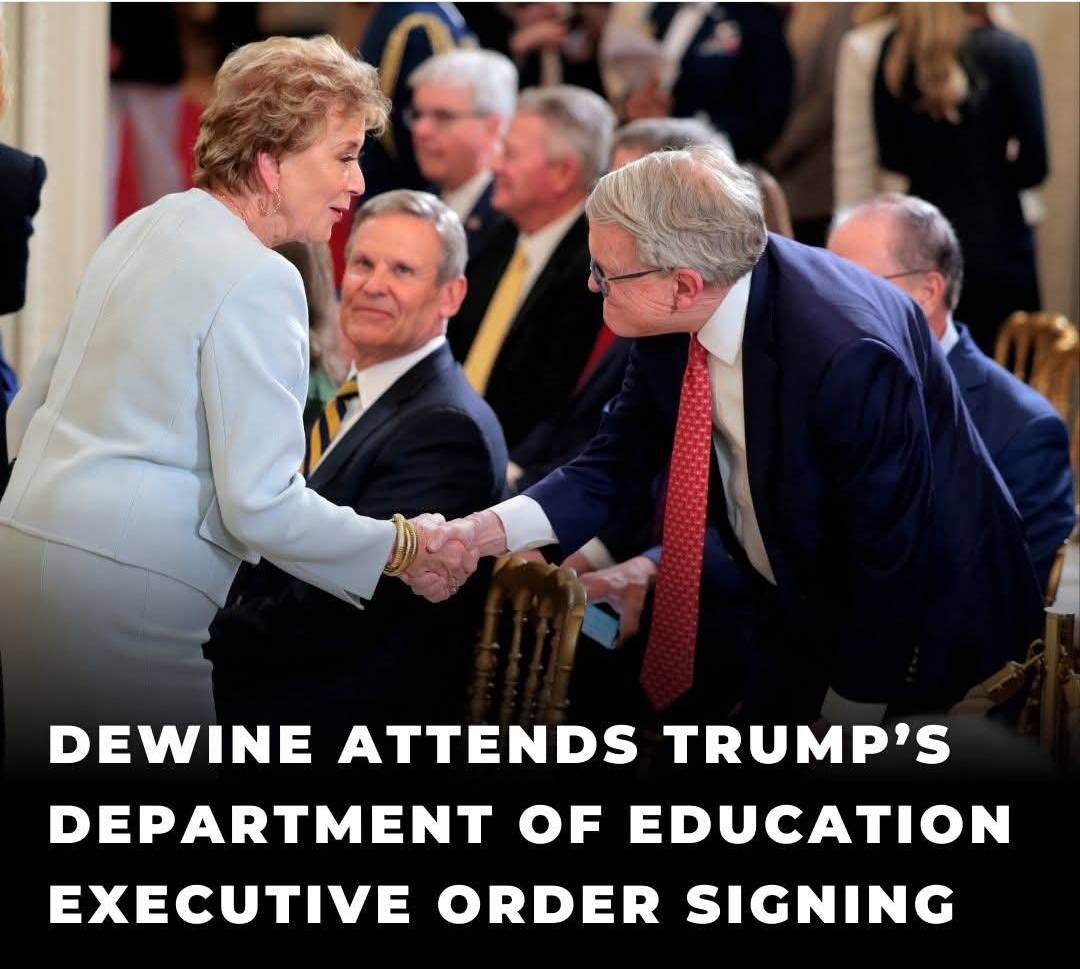Report: DeWine attends signing of executive order to dismantle Department of Education

COLUMBUS, Ohio (WCMH) — The recent move by President Donald Trump to dismantle the U.S. Department of Education has sparked a heated debate among Ohio leaders, leaving many divided over whether shifting more control to the state will ultimately benefit or harm the education system. The decision has opened a floodgate of opinions, with some seeing it as an opportunity for local autonomy and others fearing it could lead to inequities and mismanagement.
“I think there could be major benefits for Ohio,” said Ohio Senate President Rob McColley (R-Napoleon), who has long advocated for states to have greater control over education funding and policy. “The federal government’s one-size-fits-all approach doesn’t work for every state. Ohio knows what’s best for Ohio.”
But not everyone shares McColley’s optimism. Ohio Senate Minority Leader Nickie Antonio (D-Lakewood) expressed deep concerns about the potential consequences. “I’m worried about what this means for our students, especially those who rely on federal programs to succeed,” she said. “This isn’t just about money—it’s about the future of our children.”
Ohio Governor Mike DeWine, who attended the executive order signing at the White House, has thrown his support behind the move. In a statement, DeWine emphasized the importance of tailoring education to meet the unique needs of Ohio’s students. “Every student, family, and community is different,” he said. “In Ohio, we’ve achieved great results by focusing on our priorities, like improving literacy and creating pathways for students to succeed in the workforce. By giving states more authority, we can build on that success and ensure our education system reflects Ohio’s values and needs.”
DeWine’s presence at the signing, however, drew sharp criticism from the Ohio Democratic Party. Katie Seewer, a spokeswoman for the party, accused DeWine and other Republican leaders of prioritizing politics over students. “Ohio’s students are our future, but instead of standing up for them, our elected officials are cheering as billionaires dismantle their access to quality education,” Seewer said. “This isn’t about what’s best for Ohio—it’s about advancing an extreme political agenda.”
The stakes are high for Ohio’s education system. Public K-12 schools and universities in the state receive millions—sometimes billions—of dollars annually from the Department of Education. McColley argues that this funding often comes with burdensome conditions that limit how states can use it. “It’s legal bribery,” he said. “The federal government says, ‘Take this money, but you have to do exactly what we say.’ That approach doesn’t work for Ohio. We need flexibility to address our unique challenges.”
McColley pointed to Title IX compliance funding as an example. “The federal government ties our hands with regulations that don’t make sense for our state,” he said. “If we had block grants instead, we could allocate resources where they’re needed most. Ohio knows what’s best for Ohio.”
But Antonio isn’t convinced. She worries that without federal oversight, Ohio’s Republican-led legislature could divert funds away from public schools and toward private or religious institutions. “We’ve already seen leaders suggest cutting $1 billion from the Fair School Funding Formula while proposing to give that same amount to private schools,” she said. “That’s not equitable, and it’s not what our students need.”
Antonio also raised concerns about the potential loss of critical programs like Title I, which provides supplemental reading services and additional support for at-risk students. “These programs help kids who might otherwise fall through the cracks,” she said. “Without federal funding, I fear we’ll see more students left behind.”
The debate over state versus federal control isn’t just about money—it’s about values and priorities. McColley believes the Constitution grants states the right to oversee education, and he sees this as an opportunity for innovation. “Every state is a laboratory of democracy,” he said. “Some will get it right, and some will get it wrong, but we’ll learn from each other. Ohio has the chance to lead the way.”
Antonio, however, remains skeptical. “There’s a disconnect between what our leaders say and what they do,” she said. “I don’t trust the current legislature to act in the best interest of all students. This isn’t about politics—it’s about ensuring every child has access to a quality education.”
The controversy comes on the heels of a major restructuring of Ohio’s State Board of Education and Department of Education and Workforce, which has already stirred debate about the direction of the state’s education system. As Ohio grapples with these changes, one thing is clear: the decisions made in the coming months will have a lasting impact on the future of education in the Buckeye State.
“There are a lot of moving parts here,” Antonio said. “But at the end of the day, I worry about what this means for our children. Education is the foundation of our society, and we can’t afford to get this wrong.”
As the debate continues, Ohioans are left wondering whether this shift in power will lead to greater innovation and success or deepen existing inequities. For now, the future of Ohio’s education system hangs in the balance, with leaders on both sides of the aisle fiercely defending their vision for what’s best for the state’s students.








